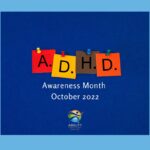Overview
The mental health illness known as obsessive-compulsive disorder (OCD) is typified by recurrent, bothersome thoughts known as obsessions and repetitive actions or thoughts known as compulsions that are carried out in reaction to these obsessions. These actions are frequently taken in an effort to calm down or avoid a feared situation. On the other hand, they can seriously lower quality of life and everyday functioning. A comprehensive strategy that tackles the underlying anxiety as well as the dysfunctional coping mechanisms linked to OCD is necessary to overcome the illness. Through comprehension of OCD’s nature and application of research-backed therapies, people can end the vicious cycle of fear and take back control of their life.
An Understanding of Compulsive and Obsessive Behavior
OCD is one of the most common psychiatric diseases, affecting 1-3 percent of the global population. It can develop at any age, although it usually manifests in late childhood or adolescent. Although the precise etiology of OCD is unknown, a combination of neurological, genetic, and environmental variables are thought to be involved. OCD sufferers frequently endure severe worry and anguish as a result of their obsessions, which can include intrusive thoughts about taboo or forbidden subjects as well as fears of contamination, symmetry, or damage.
On the other side, compulsions are habitual actions or mental processes that people feel compelled to carry out as a result of their obsessions. These actions are meant to counteract or lessen the anxiety brought on by the obsessions, but they only offer fleeting solace and serve to feed the OCD cycle. Frequent compulsions include hand washing excessively, counting, checking, and looking to other people for validation. OCD can eventually take a large toll on time and energy, making it difficult to focus on everyday tasks, relationships, employment, and education.
Ending the Anxiety Cycle
A thorough strategy that tackles the underlying anxiety that fuels OCD symptoms in addition to the obsessions and compulsions is necessary to overcome it. For OCD, cognitive-behavioral therapy (CBT) is the gold standard, especially in the form of exposure and response prevention (ERP), a specialized kind of CBT. ERP aims to sever the connection between obsessions and anxiety by methodically exposing people to their obsessions while stopping them from acting out compulsions.
In ERP, patients and their therapist collaborate to build a hierarchy of anxiety-inducing circumstances, beginning with less severe triggers and advancing to more severe ones over time. People who are repeatedly exposed to these triggers develop the ability to handle the accompanying anxiety without turning to obsessive behaviors. This eventually results in habituation, a state in which the person is less anxious as a result of becoming desensitized to the stimuli.
The illogical ideas and cognitive distortions that underpin OCD are challenged and reframed using cognitive restructuring approaches in addition to ERP. People can lessen the potency of their obsessions and cultivate more adaptive thought patterns by recognizing and confronting problematic thought patterns.
To treat OCD symptoms, medication—such as selective serotonin reuptake inhibitors, or SSRIs—is frequently used in addition to treatment. Serotonin levels in the brain are known to be related to anxiety and mood control, and SSRIs aid in regulating these levels. Medication targets the biological components of OCD, whereas treatment focuses on altering behavior and thought processes. Although it can be beneficial for certain people, medication works best when used in conjunction with therapy.
In the healing process, assistance from friends, family, and support groups can also be very important. As people strive to overcome their symptoms, having a solid support system can offer accountability, understanding, and encouragement. Support groups, in particular, facilitate the connection between individuals and others who have experienced similar things, providing a sense of validation and camaraderie.
Obstacles & Difficulties
Even with successful treatment, getting over OCD can be difficult and frequently takes time. Along the road, many people encounter setbacks and relapses, especially in stressful situations or during significant life transitions. People should be persistent and patient in their efforts, understanding that development can be slow and nonlinear.
Treatment and recovery may also be hampered by stigma and false beliefs about mental illness. Many OCD sufferers may be too embarrassed or ashamed to ask for assistance out of concern for other people’s opinions or misinterpretations. In order to fight stigma and advance wider understanding and acceptance of OCD as a real medical disorder, advocacy and education initiatives are required.
Furthermore, certain people may have limited access to high-quality mental health care, especially those who come from underprivileged or marginalized groups. People may be unable to get the care they require due to structural obstacles like availability, cost, and cultural shame. Ensuring that every person with OCD has access to effective treatment requires improving mental health services accessibility and reducing care inequities.
In summary
A comprehensive strategy that tackles the underlying anxiety and inadequate coping processes linked to obsessive-compulsive disorder (OCD) is necessary to overcome the illness. The gold standard treatment for OCD is cognitive-behavioral therapy (CBT), specifically exposure and response prevention (ERP), which assists patients in ending the cycle of anxiety by facing their fears in a methodical and controlled way. Advocacy efforts, medication, and the support of friends and family are all crucial components of the healing process.
With the correct resources and assistance, recovery is achievable even in the face of obstacles and difficulties that OCD sufferers may encounter. Through increasing awareness, eradicating stigma, and facilitating accessibility to high-quality mental health services, we can assist people with OCD in escaping the clutches of anxiety and taking back control of their lives. People can overcome OCD and prosper with persistence, patience, and support.




